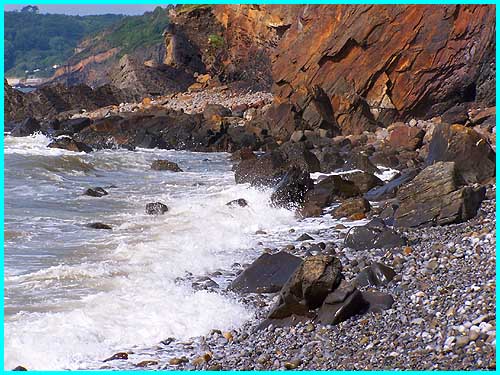|
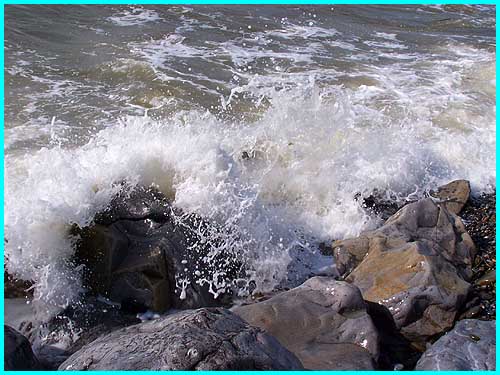 As the waves splashed on the rocks driven in part by a stiff sea breeze, they gave only a hint of the awesome power of nature. From the edge of the shingle, the sands shelve very gently and create shallow water which in calm conditions, according to local residents, are warmer than anywhere else along the coast. |
 Today the rocks stood firm and repelled the water with ease but in stormy times even a big rock like this one is susceptible to the forces of nature and the sea. |
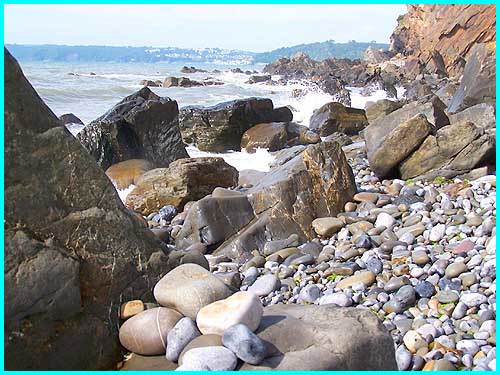 Rocks, pebbles and boulders of all sizes form a barrier between the water and the concrete wall that adds to the sea defences at Amroth. |
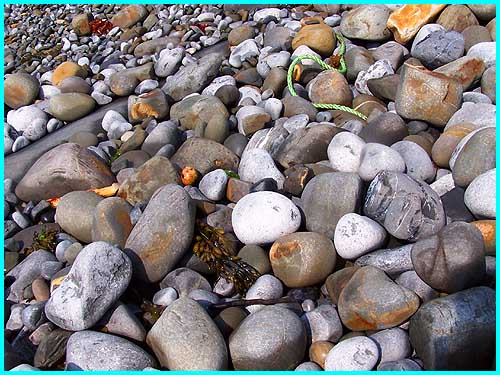 On the shingle bank seaweed and a little jetsam left behind by the receding tide can be found. Other finds among the pebbles in the past have been fossilised hazelnuts, bones, horns and pieces of flint. |
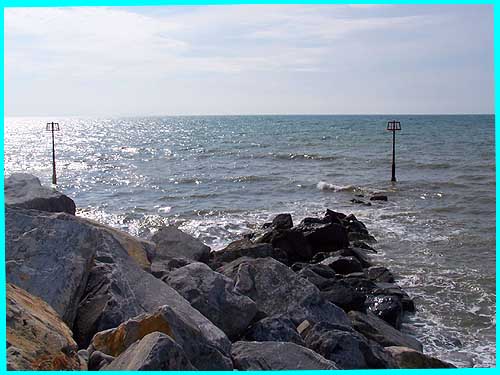 Man made groynes also help with sea defences and divide the beach into numerous segmented areas. |
 To the east the coastline stretches away towards Pendine Sands; the next groyne can be seen and the shingle bank rises steeply to the coast road. |
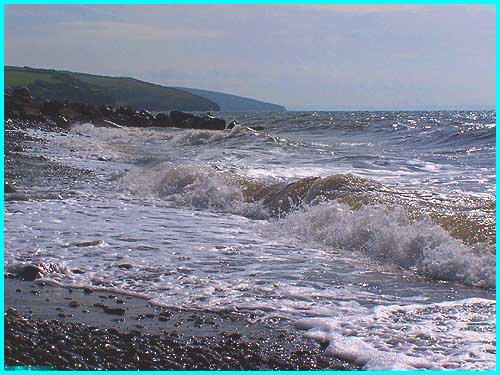 The golden sands are now just becoming visible as the waves break on the shore but it is now time to move on. When Spring tides reveal the lowest parts of the beach it is possible to see the remains of a forest that once covered the area when petrified stumps of trees are revealed. |
